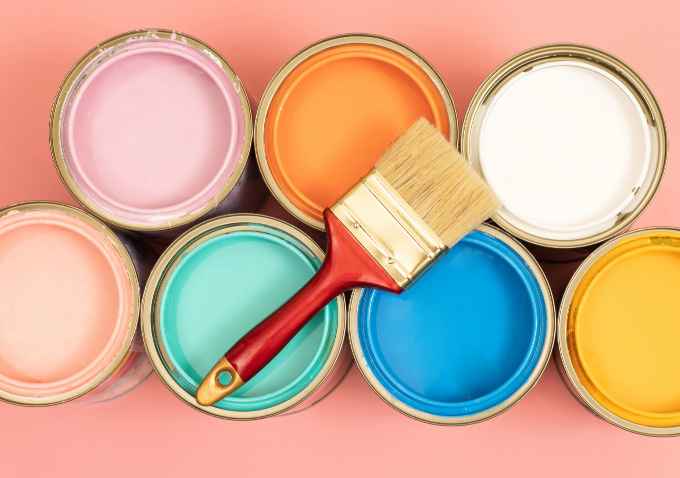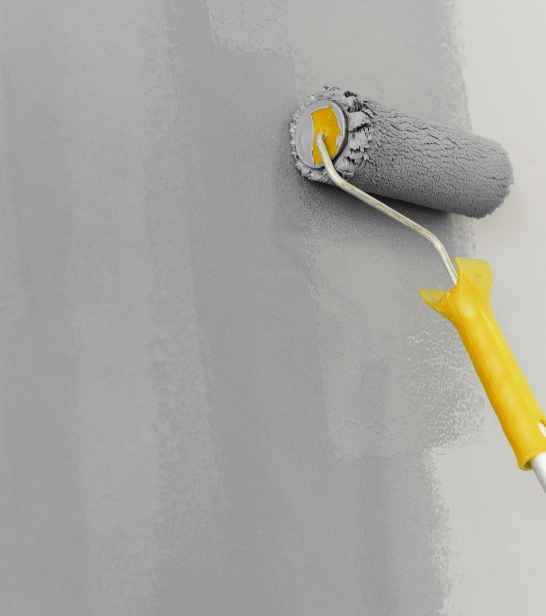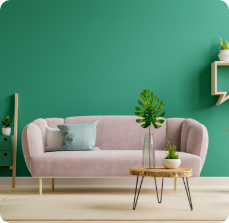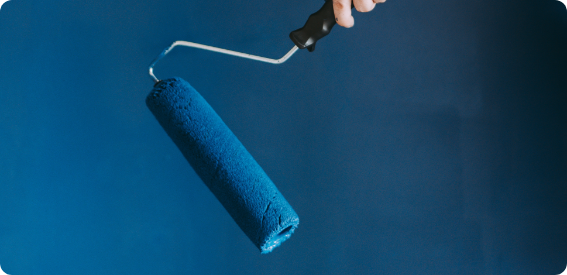Painting Techniques
Painting Guide
Painting Tips
Painting Guide
Painting Tips
Once you’ve narrowed down the paint samples to the colors you’d like to use, take home samples of various shades and view them under all lighting conditions. Look at them during different times of the day and under the lighting that will be used in that room.
Good Painting Weather
What kind of weather can you paint in? The answer varies with the product and whether you are painting indoors or out. A general rule is that Water Based paints and primers should not be applied below 50°F. Oil-based paints should be applied when the air & surface temperatures are above 40°F. Do not paint when the temperature is over 95°F or the relative humidity is above 85%.
It is best to paint west or north sides during the morning, east or south in the afternoon. Avoid painting in the hot summer sun. Paint on the shady side. The paint will be less apt to blister and peel.
It is best to paint west or north sides during the morning, east or south in the afternoon. Avoid painting in the hot summer sun. Paint on the shady side. The paint will be less apt to blister and peel.


Maintain A “Wet” Edge
whether using a brush or roller, it is very important to maintain a “wet” edge as you paint to help eliminate lap marks. Always brush or roll INTO the wet edge, not away from it. When you stop painting, always stop at a corner. Maintaining a wet edge is even more important when staining than in painting, as lap marks are more prominent. If you have to start a new can in the middle of a wall, mix some of the new paint with the last of the old in the old can to ensure blending of colors.
Once you’ve narrowed down the paint samples to the colors you’d like to use, take home samples of various shades and view them under all lighting conditions. Look at them during different times of the day and under the lighting that will be used in that room.
Selecting Your Color
You’ll find that different conditions yield slight variations in the appearance of a particular color or shade. When you take the extra time to investigate all conditions you’ll be able to choose the color that’s just right for you.
Are you considering using a bold color for your next painting project? If so, take the size of the job into account when you’re selecting your color. Color tends to be intensified when used on large areas and you may end up with an appearance that’s not quite what you had in mind. If you’ve got a large surface to cover, try a color that’s a shade or two lighter-you’ll avoid a common pitfall and end up with the look you envisioned.
Are you considering using a bold color for your next painting project? If so, take the size of the job into account when you’re selecting your color. Color tends to be intensified when used on large areas and you may end up with an appearance that’s not quite what you had in mind. If you’ve got a large surface to cover, try a color that’s a shade or two lighter-you’ll avoid a common pitfall and end up with the look you envisioned.


Improving Your Painting Surface/ Environment
There’s an easy, but often neglected, step that can give your interior painting projects near professional results with only a small investment of your time. Before you apply a single stroke, wash down your surface and inspect it for imperfections such as bumps or dimples. This can be done best by dimming the lighting in the room and placing a bright light source next to the surface to expose the imperfections. Once you’ve discovered the flaws, sand them or fill them as necessary, and wash again to give yourself the optimum painting surface.
Before painting over a glossy surface, use fine sandpaper on the surface and wash down the area with water and a light detergent to achieve optimum paint adhesion.
When you’ve got cracks or holes to fill, apply spackle into the imperfection with a putty knife and smooth the area so that its flush with the surface. After the spackle has dried, lightly sand the area to further ensure a smooth and even surface. You may find that the spackle shrank a bit while drying. If so, repeat the process a second time and remember to wash down the area with water to remove any dust before you paint.
Before you begin your interior projects, take time to create the best working environment you can. Often times space is limited, if you can’t remove all your furniture from the room, cover the items with plastic to prevent a painting disaster. To obtain the best possible results, remove electrical faceplates and hardware, pictures and window treatments.
Before painting over a glossy surface, use fine sandpaper on the surface and wash down the area with water and a light detergent to achieve optimum paint adhesion.
When you’ve got cracks or holes to fill, apply spackle into the imperfection with a putty knife and smooth the area so that its flush with the surface. After the spackle has dried, lightly sand the area to further ensure a smooth and even surface. You may find that the spackle shrank a bit while drying. If so, repeat the process a second time and remember to wash down the area with water to remove any dust before you paint.
Before you begin your interior projects, take time to create the best working environment you can. Often times space is limited, if you can’t remove all your furniture from the room, cover the items with plastic to prevent a painting disaster. To obtain the best possible results, remove electrical faceplates and hardware, pictures and window treatments.
When To Paint
Does your spring-cleaning routine include painting projects? Well consider this: spring days usually cool down dramatically after sunset. This sudden change in temperature can result in a sticky, almost gummy finish to your paint. When you can, try to tackle those paint projects on warm summer days. This will allow your paint to dry faster and achieve a more desirable finish.








